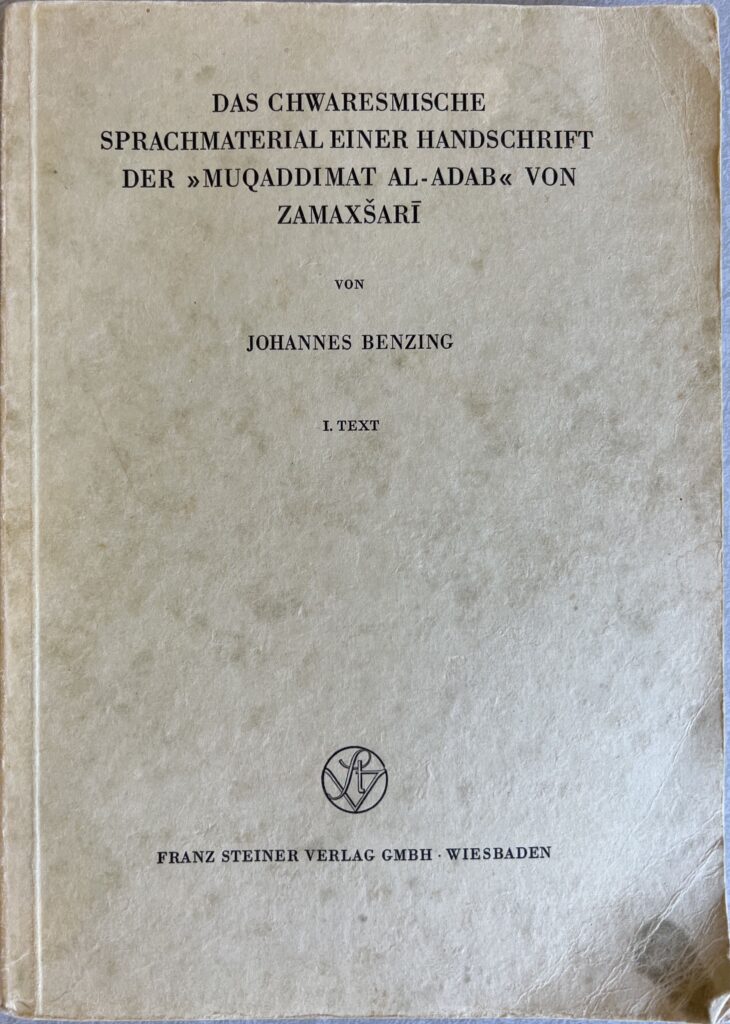Approximately concurrent with Henning’s late work on the Chorasmian lexicon in the 1960s, another effort was underway back in Germany. The German Turkologist (and Nazi cryptanalyst) Johannes Benzing (1913-2001) had begun editing the Chorasmian material preserved in the Muqaddimat al-Adab, primarily based on the manuscript Yusuf Aǧa 5010 held in Konya and published in facsimile by Togan in 1951. Benzing was not a scholar of Iranian languages, but was primarily interested in Chorasmian as a possible substrate language to the Turkic variety that became current in the region from the 13th century on (known as Khwarezmian Turkic or pre-Chagatay). His collection of this material published in 1968 (Das Chwaresmische Sprachmaterial einer Handschrift der “Muqaddimat al-Adab” von Zamaxšari) therefore ended up beset by problems.

The work is first of all something of an eclectic edition. Benzing combines his idiosyncratic transliteration of the Chorasmian glosses in the Konya manuscript with the Arabic and Persian equivalents and Latin translations as presented in the 1843 edition of the Muqaddima by Johannes G. Wetzstein (1815-1905). Benzing leans in the direction of a text edition, listing each word or form as it appears in order in the manuscript, rather than gathering them into an alphabetized grouping. As a guide to the Chorasmian lexicon, this means that the edition is rather hard to use. Moreover, as a guide to a single manuscript, its eclectic arrangement with ms pages mixed with the Wetzstein entry numbers means that it is confusing to peruse.
But the main problem was that Benzing made little effort to interpret the spellings of Chorasmian words, many of which were partially or totally unpointed. He used a complicated transliteration scheme to try to indicate what letters should have been pointed a certain way and which remained unclear. Lacking knowledge of Iranian languages and philology, he wasn’t able to resolve these problems through comparison and etymology, and ended up mis-presenting numerous words, many of which would have been decipherable, behind their unpointed Arabic skeletons, to someone with knowledge of Old or Middle Iranian. This is precisely what MacKenzie pointed out in a series of five (rather brutal) review articles on the book that he published from 1970 to 1972. His appraisal of the work can more or less be summed up by his statement that “Benzing can be faulted for many misreadings and, worse, wrong generalizations from them” (1970:541). These reviews are so extensive that reference to Chorasmian words preserved in the Muqaddima is simply not possible without them.
Continue reading